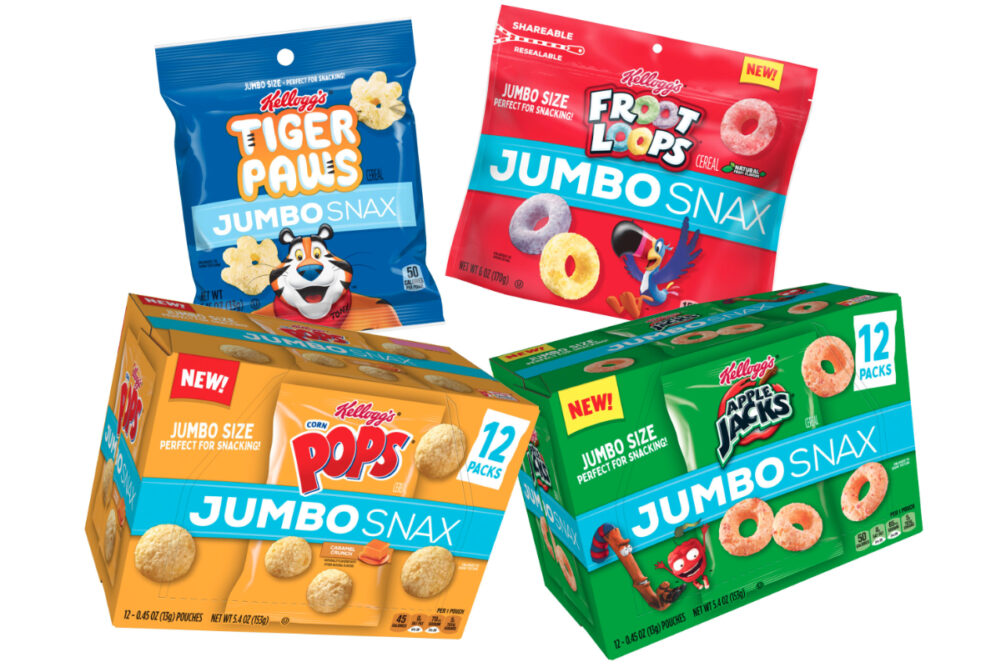BATTLE CREEK, MICH. — Buoyed by a pandemic that the company’s chief executive officer said provided “a sampling event like none other,” Kellogg Co. turned in strong earnings growth during fiscal 2020.
Net income in the fiscal year ended Jan. 2 totaled $1.25 billion, equal to $3.65 per share on the common stock, up 30% from $960 million, or $2.81 per share, in fiscal 2019. The increase primarily reflected reduced one-time charges and a lower reported effective tax rate, more than offsetting the absence of results from divested businesses.
Net sales of $13.77 billion were up 1.4% from $13.58 billion in the previous fiscal year. Organic net sales increased approximately 6% during the year.
In the fourth quarter, Kellogg companywide posted net income of $205 million, or 60¢ per share, up 41% from $145 million, or 43¢, in the previous year’s fourth quarter. Sales in the fourth quarter were $3.46 billion, up 7.4% from $3.22 billion. Organic sales rose 2.5%.
Kellogg said organic net sales are forecast to decrease by approximately 1% in fiscal 2021, primarily because of the comparison to unusually strong, COVID-related growth in fiscal 2020.
Adjusted earnings per share are forecast to increase by approximately 1% in fiscal 2021.
“We set out this year to return to balanced financial growth, meaning balance between top-line growth, margin expansion and cash flow conversion,” Steven A. Cahillane, chairman, president and chief executive officer, said during a Feb. 11 conference call with analysts. “And sure enough, through all the unusual impacts, divestiture impact, COVID impacts, 53rd week, we did return to balanced financial growth in 2020. Strong organic net sales growth, even if you exclude a reasonable estimate for COVID’s net benefit; an expansion in gross profit margin despite incremental COVID-related costs; growth in operating profit, even despite losing about 6 percentage points from the mechanical impact of last year’s divestiture; a better-than-expected increase in cash flow, featuring a significantly improved conversion of net income. Even excluding COVID net benefits, we returned to balanced financial growth in 2020, right on schedule.
“We executed very well in market. The pandemic presented us with a sampling event like none other. And we saw increases in household penetration that outpaced most of our categories, giving us an excellent opportunity to communicate to and retain new and lapsed consumers. And we outgrew most of our categories, holding or gaining share of categories representing more than 80% of our net sales in those measured markets.
“Our emerging markets are a key long-term growth driver for us, and they represent over 20% of our net sales. In 2020, they were severely tested by pandemic-related shutdowns, economic slowdowns, even social unrest. And yet they delivered high single-digit organic net sales growth for us in 2020, even accelerating from the prior two years’ growth rates. This is a real testament to our portfolio, our local supply chains and our experienced management teams in these markets. In short, the business performed very well in 2020, and we will take that momentum into 2021.”
In North America, operating profit increased 21% in fiscal 2020 to $1.47 billion while sales eased to $8.36 billion from $8.39 billion. Organic sales, meanwhile, were up 5.1% year-over-year, Kellogg said.
“It was a very strong year for Kellogg North America,” Mr. Cahillane said. “Importantly, we saw growth across our category groups in 2020. In each of these category groups, there were headwinds in the form of sharply lower away-from-home occasions and outlets as well as reduced on-the-go occasions. The good news is that elevated at-home demand and a consumer preference for brands accelerated our retail channel growth in each of these category groups. This is a tribute to the strength of our brands, but also to the agility and execution of our team.
“Innovation launches were impeded, but we still launched successes like Jumbo Snax in cereal, expanded into new segments like we did with Incogmeato in meat alternatives and built on the runaway success of Cheez-It Snap'd. Marketing programs had to be postponed early in the year, so we revised our commercial plan. We shifted more of our brand-building into advertising, and we put to work in the second half the investment dollars we couldn’t execute in the first half.”
Mr. Cahillane did note some challenges in the company’s Frosted Flakes business. He said Kellogg was forced to cut back on promotions of Frosted Flakes due to capacity constraints, leading to a decline in market share during the fourth quarter.
“We were capacity constrained as we exited the year,” he explained. “Nobody anticipated, obviously, the type of year that cereal would have. Category grew nearly 9%, slowed down a little bit in the second half, but still 5, 6 percentage growth. So we worked very hard all year to keep up with demand and keep our service levels as high as we possibly could. And we ended the year with a flat share performance, slipped a little in the fourth quarter. …
“Almost all of that slippage was due to Frosted Flakes where because of capacity, we had to back away from promotions. You can see that in the syndicated data, down 20% in incremental sales because we couldn't execute against the Mission Tiger program and we wanted to keep our service levels where retailers deserve them to be. So we did give up promotional slots. And nearly all of our share decline in the fourth quarter was due to Frosted Flakes.
“Now as we enter 2021, we continue to build against capacity, we continue to make good improvements and we continue to be very optimistic. As we go through the first half of this year, we’re going to get better and better in terms of that capacity. And therefore, we’ll get better and better in terms of our share performance.”





